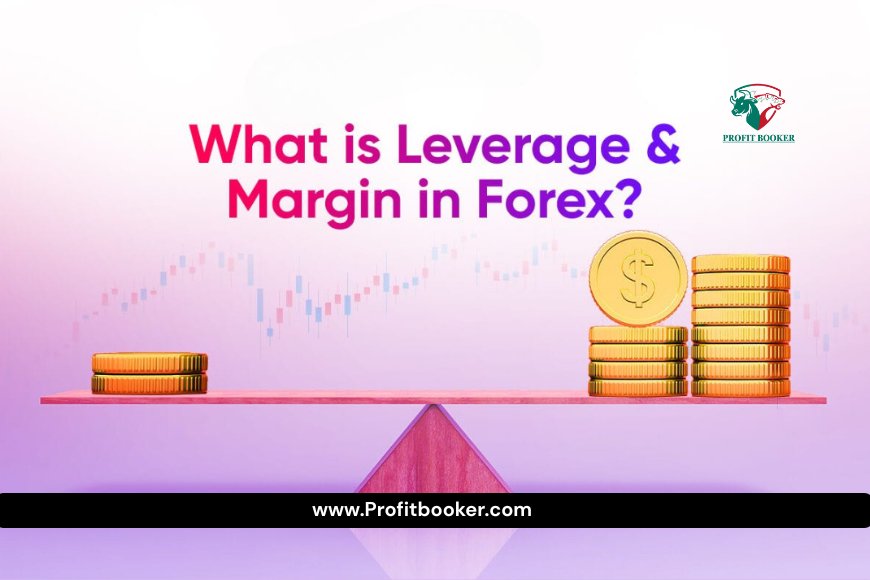What Is Leverage in Forex Trading? (Simple Explanation for Beginners)
This beginner-friendly guide explains what leverage in forex trading is, how it works, and why it’s both powerful and risky. Learn leverage ratios, margin requirements, pros and cons, and safe trading tips with real examples so you can trade smarter and avoid costly mistakes.

If you’ve started exploring forex trading, you’ve likely heard the word “leverage” thrown around. It often sounds like a magic tool that lets you make big money with little capital.
And yes — leverage can multiply your profits. But it can also destroy your account just as quickly.
In fact, many new traders lose money fast because they don’t fully understand how it works.
In this complete beginner’s guide, we’ll cover:
-
What leverage in forex trading means
-
How it works with real-life examples
-
Why it’s both powerful and risky
-
The safest ways to use it
1. What Is Leverage in Forex Trading?
Leverage in forex trading is simply borrowing money from your broker to control a much larger trade than your own deposit allows.
The deposit you put up is called margin.
Example:
-
You have $1,000 in your account
-
Broker offers 1:100 leverage
-
You can control up to $100,000 worth of currency
It’s like using a small key (your money) to open a big door (large trades).
1.1 Understanding Leverage Ratios
Leverage is shown as a ratio, for example:
-
1:10 → Every $1 of yours controls $10 in trades
-
1:50 → Every $1 controls $50
-
1:100 → Every $1 controls $100
-
1:500 → Every $1 controls $500
So, 1:100 leverage means $1,000 in your account lets you trade up to $100,000.
1.2 Simple Example
-
Account balance: $1,000
-
Leverage: 1:100
-
Trade size: $50,000 (0.5 lots)
Without leverage: You’d need $50,000 to make this trade.
With leverage: You only need $500 margin — the broker covers the rest.
2. Why Leverage Matters in Forex
Forex markets move in small daily percentages (often 0.5%–1%). Without leverage, profits would be tiny.
Leverage allows you to:
-
Turn small moves into bigger profits
-
Trade larger lots with less capital
-
Make the most out of small market changes
3. The Double-Edged Sword: Profit vs. Loss
Leverage can multiply gains — but also multiply losses at the same speed.
3.1 Profit Example
If EUR/USD moves +1% in your favor:
-
Without leverage ($1,000 trade): Profit = $10
-
With 1:100 leverage ($100,000 trade): Profit = $1,000
3.2 Loss Example
If EUR/USD moves -1% against you:
-
Without leverage: Loss = $10
-
With 1:100 leverage: Loss = $1,000 (account wiped out)
Takeaway: High leverage = high risk.
4. Margin: The Key to Leverage
Margin is the money you set aside to open a leveraged trade.
Formula:
Example:
Trade size $100,000, leverage 1:100 → Margin = $1,000
If your account balance falls too low, your broker can issue a margin call or close your trade automatically.
5. Comparing Different Leverage Levels
Here’s how leverage changes your risk with the same $1,000 balance:
| Leverage | Max Trade Size | Margin Needed (for $50,000 trade) | Risk Level |
|---|---|---|---|
| 1:10 | $10,000 | $5,000 | Low |
| 1:50 | $50,000 | $1,000 | Medium |
| 1:100 | $100,000 | $500 | High |
| 1:500 | $500,000 | $100 | Extreme |
6. Global Leverage Limits
Regulators set leverage limits for safety:
-
USA: 1:50 for major pairs
-
EU: 1:30 for majors, 1:20 for minors/exotics
-
Australia: 1:30 for retail traders
-
Offshore brokers: Up to 1:500 or more
Just because a broker offers 1:500 doesn’t mean you should use it.
7. Choosing the Right Leverage
-
Beginner: Stick to 1:10 or 1:20
-
Experienced day trader: 1:50 or less
-
Scalper: May use higher leverage but with strict stops
8. Real-World Leverage Example
Scenario: Win
-
Capital: $1,000
-
Leverage: 1:100
-
Position: $100,000 EUR/USD
-
Price rises by 0.5% → Profit = $500 (50% gain in one move)
Scenario: Loss
-
Same trade
-
Price falls by 0.5% → Loss = $500 (Half your account gone)
9. How to Use Leverage Safely
-
Risk only 1–2% of your account per trade
-
Always use stop-loss orders
-
Avoid full leverage — just because you can, doesn’t mean you should
-
Use a position size calculator to keep risk consistent
10. Pros & Cons of Leverage in Forex
Pros
-
Trade bigger with small capital
-
Boost profit potential
-
Flexible trading options
Cons
-
Magnifies losses
-
Can wipe out accounts fast
-
Requires strict discipline
11. Mistakes Traders Make with Leverage
-
Using maximum leverage immediately
-
Trading without stop-loss
-
Getting overconfident after a win
-
Ignoring position sizing
12. Tips for Beginners
-
Practice on a demo account
-
Start with low leverage (1:10 or 1:20)
-
Focus on capital preservation
-
Learn margin rules and watch free margin levels
13. FAQs About Forex Leverage
Q: Is high leverage bad?
No, but it’s dangerous without proper risk management.
Q: Can I trade without leverage?
Yes, but you’ll need much more money.
Q: What’s the safest leverage?
For beginners, 1:10 or lower.
14. Final Thoughts
Leverage is a powerful tool in forex trading.
It can turn small moves into huge profits — but also massive losses.
If you want long-term success:
-
Respect leverage
-
Use it sparingly
-
Focus on risk management first
In trading, survival matters more than a single big win.
Meta Description (SEO):
Learn what leverage in forex trading is, how it works, and how to use it safely. Discover tips, examples, and risk management strategies for beginners.
Target Keywords:
forex leverage explained, what is leverage in forex, forex margin, safe leverage for beginners, leverage in forex trading




